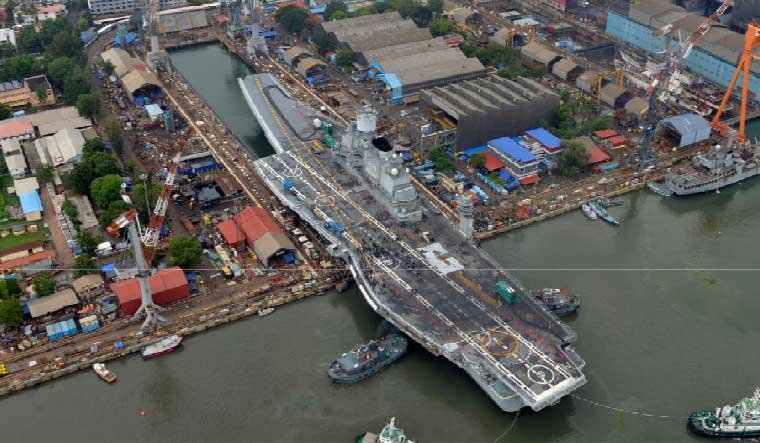So Gorshkov was decommissioned in 1996, and from Wikipedia immediately caught the attention of the Indians. Negotiations were by all accounts contentious, an agreement only being reached in 2004, with intent to commission the ship in 2008. In the event, this slipped to 2013 due to the deteriorated condition of both Russian shipyards and the ship itself, with significant cost overruns.
So we have two places where India might decide not to go through with purchasing/finishing Vikramditya - in the late 90s and early 2000s, during the negotiations with Russia, and in 2008, when things became acrimonious between the two countries over the delays and cost overruns. Viraat, for her part, was refitted to last until 2010 between 1999 and 2001, presumably due to how long negotiations with Russia were taking.
We'll take the two options separately. In the late 1990s, the following options are available:
- USS Independence: decommissioned in 1998, had undergone the full SLEP treatment, had been offered to Brazil so the US wasn't overly worried about handing over sensitive technology with the class. On the debit side, she's 39 years old and rather large and expensive for the Indians.
- MN Clemenceau: decommissioned in 1997, sister ship sold to Brazil. Not much younger than Independence, but much cheaper to operate and still offers an upgrade over Viraat. Can likely be modified to carry modern carrier aircraft.
- An aviation-oriented Wasp class. Higher up-front cost, lower running cost and longer service life. Unfortunately limited to Harriers, which even in 1999 was a growing problem.
Looking at the options its not hard to see why the Indians continued to press for Gorshkov. You either have ancient second-hand ships, or a Harrier-only vessel when concerns are being raised about the age of the Harrier fleet.
In 2008, the following options are available:
- HMS Invincible is sitting in mothballs after being decommissioned in 2005. However, she's not much of a step up over Viraat and has the same Harrier problem.
- Aviation-oriented America. Timing is the issue here: the lead ship of the class only entered service with the US Navy in 2014 and I doubt the Indians are going to get their version any faster with all the design changes. Considering Vikrant was expected to enter service in 2013, and even pessimistic projections of Vikramaditya's refit got her to the Indians in the same time period, not very attractive.
- New-build Juan Carlos/Cavour. Proven design, maintains capability, but also Harrier-dependent and with similar timing problems to an America variant.
Again, it's not hard to see why the Indians forged ahead with Gorshkov. Despite the cost overruns she was still cheaper and faster to finish refitting than buying a new ship, and while Invincible would've been cheaper she has too many drawbacks to be worth it.
Fundamentally, the problem boils down to the fact that their best alternatives relied on the Harrier, and as the Indians never bought the Harrier II they were stuck with significantly older Sea Harriers. The only option I can see the Indians going for is Clemenceau, and as the Brazilians proved that's not much of a step up in the maintenance department from Viraat.

